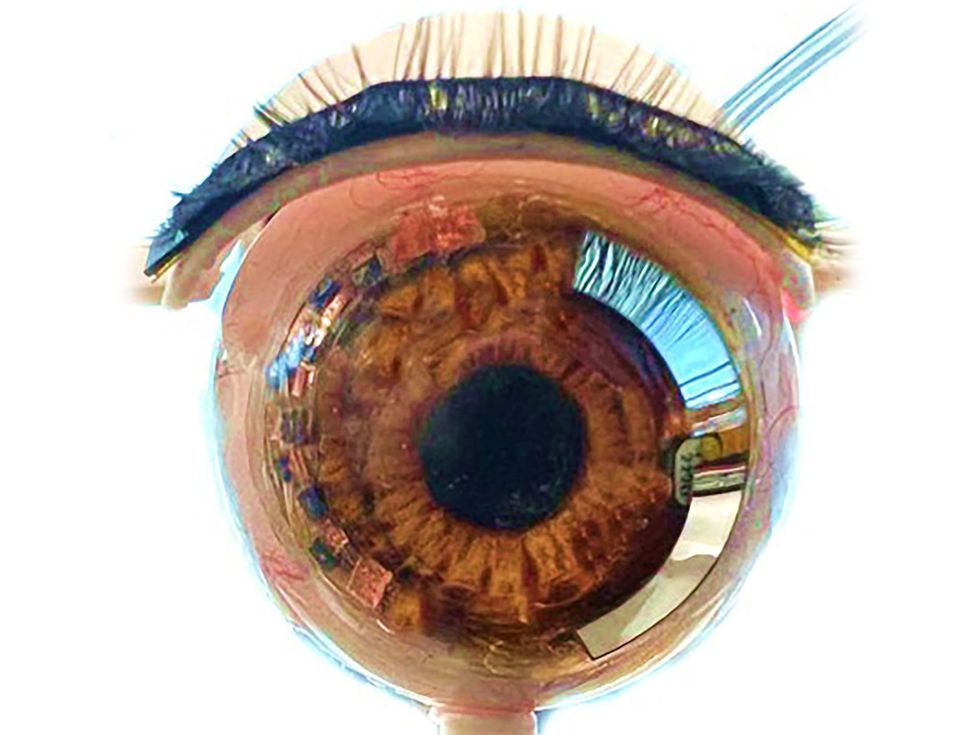As many as 100,000 breast cancer patients have one or both breasts removed in mastectomies every year in the United States. This surgery frequently leads to loss of breast sensation, which is thought to contribute to the high rates of sexual dysfunction among breast cancer survivors. But a bionic breast now under development could restore these important tactile sensations.
The project is the brainchild of Stacy Lindau, a gynecologist at the University of Chicago who specializes in the sexual function of women with cancer. She says she’s dealt with countless women over the past decade whose sex lives have been dramatically impacted by this loss of sensation.
While preserving sexual function has been a central concern of men’s prostate cancer treatment for years, Lindau says mastectomies and any subsequent reconstructive surgery have been largely guided by aesthetic considerations rather than efforts to preserve function.
“Female sexual function has been largely regarded as icing on the cake—you're lucky if you have it, but don't complain if you don't—and that's not acceptable,” she says. “The breasts are a very important sexual organ for women, and we know very little [about how] to help preserve and restore the sexual functioning of reconstructed breasts.”
So Lindau began to look for solutions. Serendipitously, she came across the work of Sliman Bensmaia, a University of Chicago neuroscientist who is focused on imbuing a sense of touch into robotic prosthetic hands using a combination of sensors to allow amputees to feel again. The pair has now teamed up to use Bensmaia’s technology to create a bionic breast that will restore tactile sensations for mastectomy patients.
The project, which started in February 2019, has received US $380,000 in funding from the U.S. National Cancer Institute to develop a “measuring stick” to quantify and track women’s subjective experience of breast sensory function and its links to sexual function. The funding will also support experiments on volunteers to establish which nerves are responsible for breast sensation.

In a recent paper in Frontiers in Neurorobotics, the pair outline how this knowledge will help develop their bionic breast. Patients often undergo breast implant surgery to restore the shape of the breasts after a mastectomy, so the team plans to simultaneously install a pressure sensor beneath the nipple that can detect when the breast is touched.
This sensor would be wired to a hermetically sealed electronic circuit lodged beneath the skin of the chest. This circuit would use sensory encoding algorithms, similar to those Bensmaia has developed for his work on hand sensation, to convert the pressure sensor’s output into electrical signals. These would then be delivered to electrodes that stimulate the residual nerves in the chest to give the patient the sensation of being touched.
This approach could be transformative for many breast cancer survivors, says Lindau. Stimulation of the nipples can be a core part of sexual arousal for many women, so the loss of sensation after a mastectomy can significantly disrupt their sex lives, she says. It can also lead to a feeling of disembodiment in which the breast doesn’t feel like part of them.
“Many of my patients can feel very distressed by the idea of their partner deriving sexual pleasure from a body part that is dead to them,” says Lindau. “And it's not just sexual function; they no longer can feel the pleasure of a hug from their child or their grandchild, and that's very distressing.”
Fortunately, Bensmaia says it should be fairly easy to transfer what his team has learned from restoring hand sensation to the breast. Most of the technology already exists, and their early research suggests the sensory characteristics of the hand and nipple are fairly similar. The only new component required is a flexible and biocompatible replacement for the rigid pressure sensors used on the prosthetic hands, which the team is working on with University of Chicago materials scientist Sihong Wang, who specializes in soft electronics.
The most exciting thing about the project is the scale of the problem it addresses, says Bensmaia. While there are probably a few tens of thousands of amputees who could benefit from his work on hands, there are millions of mastectomy patients. That not only greatly expands the number of people the technology could help, it also makes it much more likely someone will invest the money required to get it into the clinic.
“If you only have 10,000 patients you're not gonna make a ton of money. But if you have millions of subjects, you are going to make some money, and therefore [companies are] going to be more liable to invest in that kind of technology,” he says. “That's going to benefit not just the mastectomy patients but the bionic hand patients as well.”
Edd Gent is a freelance science and technology writer based in Bengaluru, India. His writing focuses on emerging technologies across computing, engineering, energy and bioscience. He's on Twitter at @EddytheGent and email at edd dot gent at outlook dot com. His PGP fingerprint is ABB8 6BB3 3E69 C4A7 EC91 611B 5C12 193D 5DFC C01B. His public key is here. DM for Signal info.



